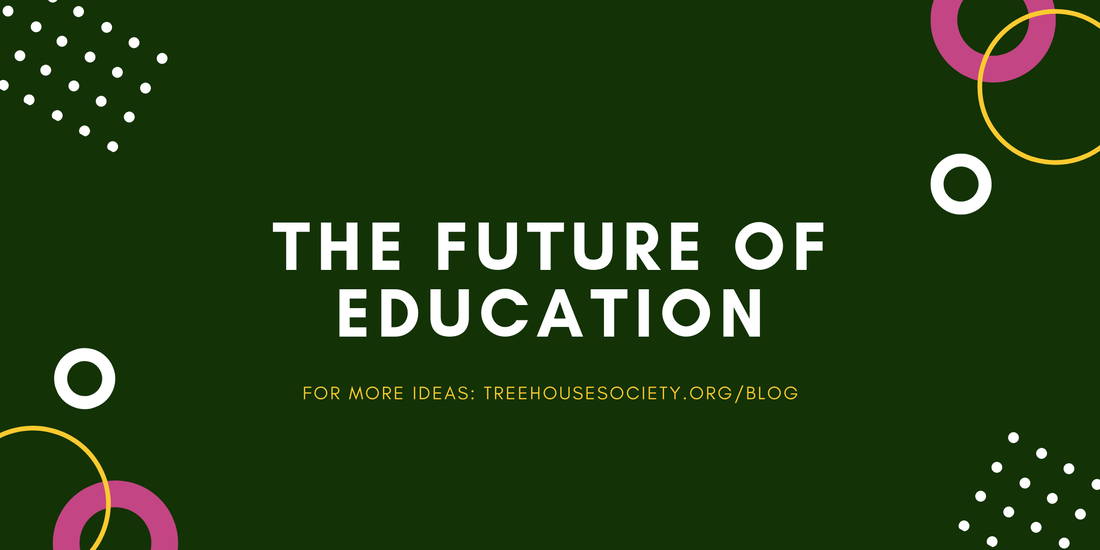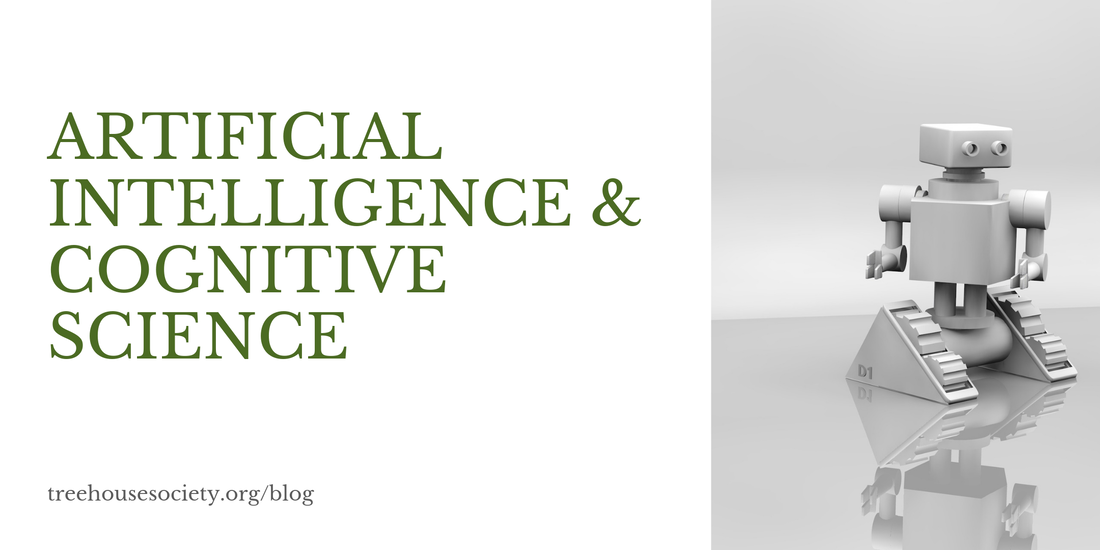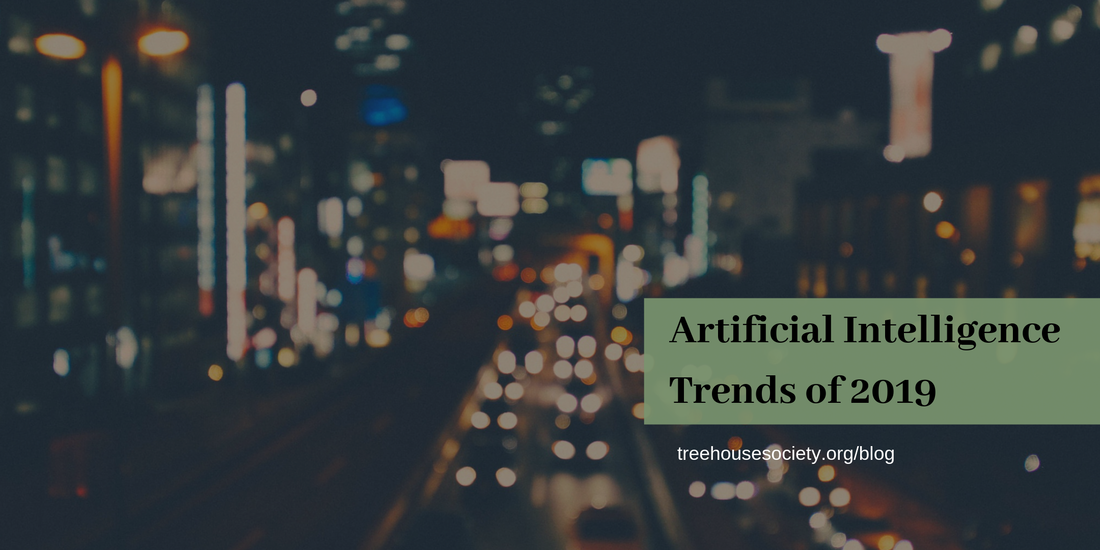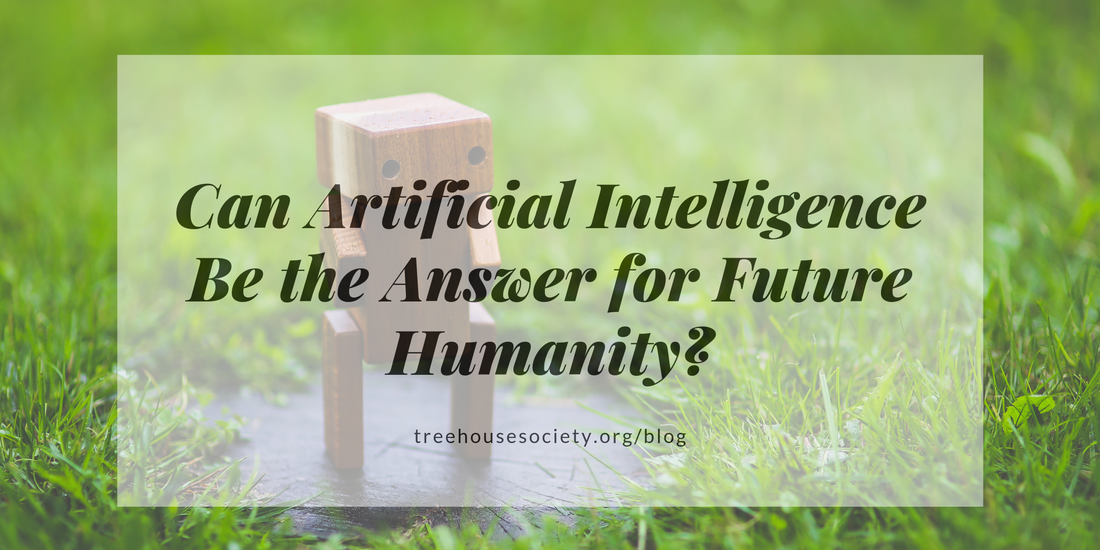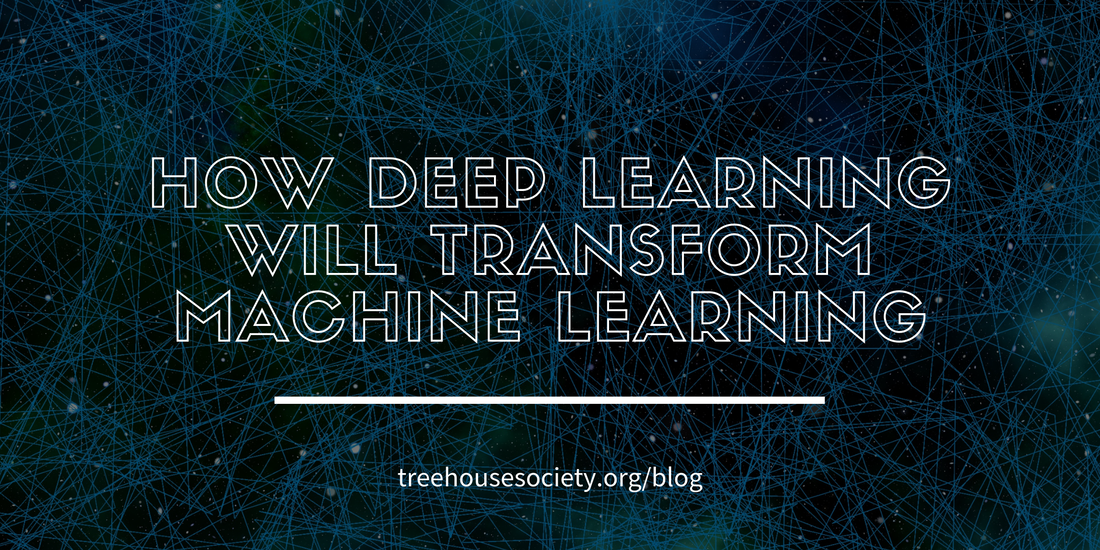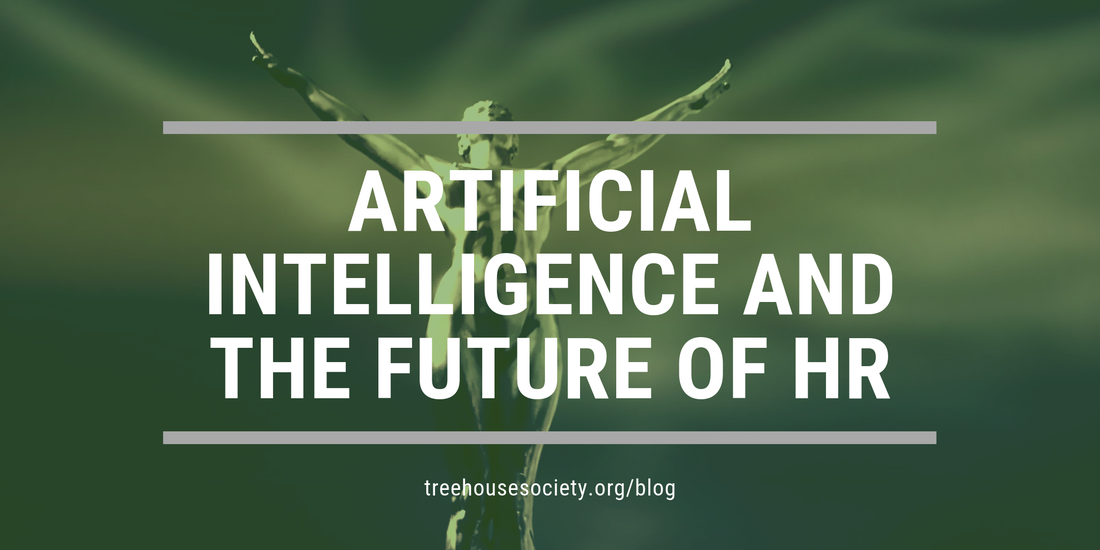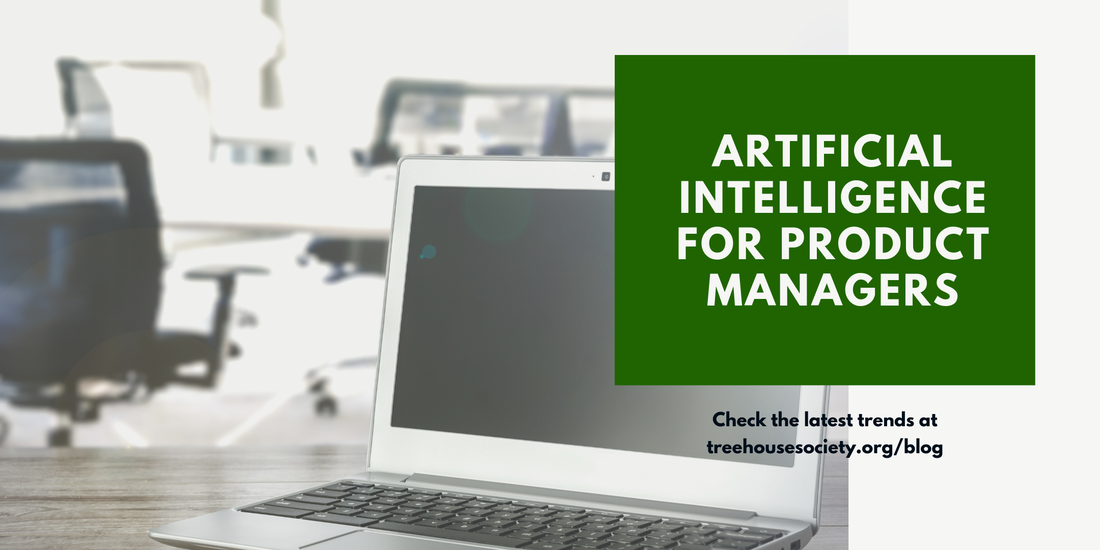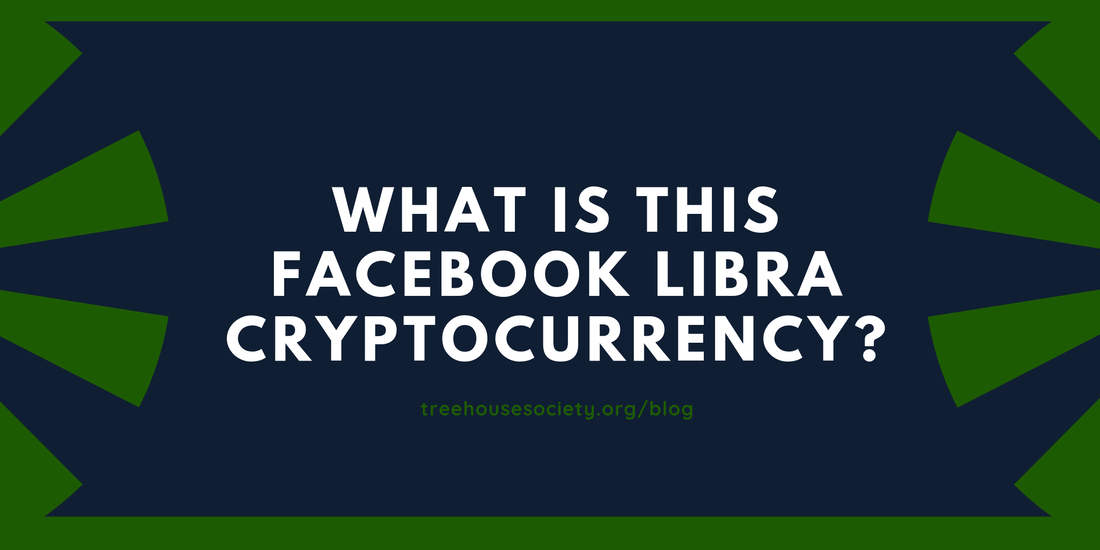|
With time, artificial intelligence is making its place in every sector of the world. With growing technology and the latest trends, humans are likely replaced by bots. Similarly, one sector that has been influenced by AI is the education sector and with time it will completely take over. Artificial intelligence and technology might take over this sector but that does not mean that education won’t exist. It will be changed in the way it is delivered as compared to today.
Here are a few points that we think will play a major role in the future of education: Technological Aspect The future of education is all about e-learning. There is almost nothing that one cannot Google the solution to. Students shouldn't have to go to a physical institute for learning with heavy textbooks for their backs. Online classes will be the trend. Even now studies have shown that virtual learning is more preferred by students. They believe it is more flexible and allows them to have a work, study, and family life balance. Online education is much cheaper and could have a deeper impact. Students won’t be “forced” to attend classes by keeping a strict absenteeism policy. They will learn because they want to. Homeschooling will be the new cool. So bullies and peer pressure will no more be a problem. Prioritizing Practicality Students will learn but the focus of the future education will be more towards learning through experiments and by being practical. Such environments shall be set up for students which will let them experience how the real-life works, a life out of books and theories. What they learn shall be implemented which will generate more learning and concept building. There is no more rote learning in the future. We see students cramming up the entire syllabus and forgetting all about it the next day. This shows that today, most of the students have no concepts about what they are learning. Personalized Schedule Students shall be given a free choice of making and customizing their schedules. Whichever time suits them and whatever course intrigues them. There will be no peer pressure or lecture-based learning which at times leads a student being left out. He or she will be able to control the pace of studying. If a student is unable to understand a course or a question then he or she will keep practicing it, until, satisfied. No More Standardized Test Exams have always been problematic. Students now cram the entire syllabus in one night, take the exam, and forget about it the next day. In the future, students shall be marked on how well the student implements and how well he performs in the field. Emotional Skills Will be Prioritized Empathy, sympathy, teamwork, and communication will be prioritized in the future because in the future the market will be focusing more on teamwork and collaboration. The education system as we know it now will be irrelevant very soon. Organizational silos will be left in the past and a holistic approach shall take over the system. REFERENCES AND CITATIONS https://nerdymates.com/blog/education-future https://elearningindustry.com/9-things-shape-future-of-education-learning-20-years https://www.the-possible.com/future-of-education-digital-campus-learning-teaching/
0 Comments
Cognitive science is the study of mind, its processes, and its functions. In a broader sense, it is about the different tasks of cognition. Scientists in this field study various functions of the brain which include memory, learning, attention, reasoning, emotions, empathy, and perception to understand these concepts in a better way they use psychology, philosophy, linguistics, and artificial intelligence. The study is not limited to cognition in humans but also in animals and machines. The goal of using artificial intelligence in cognitive science is to make a better comprehension of the mind, take benefit of the technology and to build smart devices that could make our lives much better and easier. AI involves studying the cognitive aspect of machines and to incorporate human intelligence into computers and to benefit from them.
Subfields of artificial intelligence that incorporates mind and machines are: Machine Reasoning: This is simply a computer aiding in any sort of reasoning. Its main focus is on automated theorem proving where it is attempted to check whether something follows from something else. For example, whenever humans try to reason out some topic they use reasoning, make a hypothesis, and reasonable inferences from what they already know and are aware of. Cognitive Robots: This is an attempt to create beings that have cognitive skills and can perform tasks that require cognitive powers such as memorizing and learning. These robots are very different from basic robots that work in industries whose tasks are very narrow, direct, and well-defined. The results could be a creation scary such as Westworld. Synthetic Characters: These are those agents that dwell in cyber and internet environments such as videogames. Since their environment is narrower so they are much simpler than cognitive robots as they are not connected to the actual physical world. Cognitive science, however, is still needed in this. Philosophy of AI The field of artificial intelligence is full of philosophical queries for example what includes personal being? How can consciousness be interpreted? Does free will exist? Does moral responsibility exist? AI philosophers debate various models of cognition, for example, connectionism and Logicism and different problems that have come up throughout the life span of AI. Hence, the combination of the study of cognitive science, thinking learning, memorizing, problem-solving, and artificial intelligence, the study of computers, and computer software to develop intellectual beings helps to develop various technologies that benefit the society and bring ease in our lives. The companies that come to mind when discussing artificial intelligence are Apple, VMWare, Amazon, Google, Facebook, and other big corporations. This is so since most of the artificial intelligence tools or technologies are used by the companies. The artificial intelligence trends of 2019 can be understood by first looking at the past. The 2018 artificial intelligence trends are the basis of accruing artificial intelligence trends of 2019. There are many other trends worth discussing in this blog post.
Enhanced Artificial Intelligence and machine learning through Enabled Chips The years 2019 has been characterized by the need for top-notch model chips that could be used in boosting artificial intelligence to the next level. In 2019, some of the popular companies which have taken the challenge of designing and manufacturing AI chips for artificial intelligence include Intel, Qualcomm, AMD, and NVIDIA among many others. It is through the efforts of these companies with the ability to make an execution related to AI possible. With the availability of these particular chips, the application of AI application has been hastened by a great deal and this has changed the way AI operates. Extensive cloud technology use In 2019, the AI has become one of the issues and this has further promoted the demand for cloud providers to deliver artificial intelligence through cloud technology. With this trend, the cloud developing companies have grown by a great margin. It is very crucial, therefore, to be aware of the fact that cloud platforms have expanded as a result of the introduction and growth of AI technologies. Extensive use of Privacy and Policy Terms With the rising AI apps, most companies have expanded their privacy and policy elements just to make sure that they cater to laws governing the introduction and use of AI. In that case, with the extensiveness associated with AI, we have seen the rise in which privacy and policy terms are being structured. The adoption of facial recognition applications The improvement and restructuring of AI have led to the promotion of facial recognition technologies. Such technology has taken a center stage in ensuring that users can be identified using their faces. With this particular trend, more and more companies are rapidly changing their security check by introducing facial recognition which is governed by the presence of AI technologies. With the development of technology, artificial intelligence is getting more relevant than ever. All around the world, the majority of us are familiar with the technological concepts of self-driving cars, smartphone devices with facial recognition, and even smart homes.
At first, we were intrigued and fascinated by science fiction imaginations, dreams, and movies, and now we have the:
What Is Artificial Intelligence? In simple terms, it is an advanced field of computer science that majorly comprises of intelligent machines that work and behave just like humans work and behave too. Almost everyone knows about the voice assistant systems like Siri, Google, Cortana, and even Alexa. They are created around artificial intelligence applications. The algorithms used for artificial intelligence track our browsing behaviors in a bid to give us the type of products we like. Is Artificial Intelligence The Future? Before talking about the future, artificial intelligence is already transforming the present-day settings of our world. It can as well be the future because it is making changes in diverse fields currently, which includes:
As technology continues to expand, we are sure to expect transportation such as driverless buses, smart vehicles, trains, and metros in the near future.
Artificial Intelligence machines are capable of handling diagnosis, serious and delicate operations, understanding the ways of bacteria’s and discovering swift remedies or antinodes, etc.
Through the help of climate analysis, Patten analysis, and predictions, artificial intelligence can help humans in getting much more accurate climate change pattern analysis and even access the weather and climate predictions. A place like India, where agriculture is the prime field, can make use of artificial intelligence so that they will benefit the accurate climate forecasts and analysis. To Wrap It Up Artificial Intelligence is truly making a great change in our present-day, and we know it will only get better in the future. However, people believe that artificial intelligence will take over our jobs. While it is not news anymore that artificial intelligence is automating so many tasks, it is, however, leading us to the creation of so many other job roles as well as tasks. No matter what, we are the ones to give the commands and control the machines. Artificial intelligence will be able to change our skill sets or our work patterns, but killing our jobs is not a part of it. Life is being made easier with these machines. Judging from statements published by the McKinsey Global Fashion Index, the fashion industry has tremendously increased at 5.5 percent yearly within the last decade. Also, in the year 2016, it was estimated to be worth roughly $2.4 trillion.
However, sales growth reduced by the end of 2016 and reports revealed that apparel companies have been carrying out innovations internally in a bid to reshape the fashion industry like shortening the whole fashion cycle Moving away from the fashion front, robotics and artificial intelligence have found their way into the factory of retailers as well as warehouses to boost efficiency and productivity. There are email marketing tools that clothing retailers can make use of as they provide personalized messaging that targets specific segments like regular shoppers or shoppers that are inactive. AI Apps Used In The Fashion Industry Some of the applications making waves in the fashion and retailing scene include:
To begin using it, users swiftly take a survey that asks them questions like they should rate some fashion items by tapping on either a heart or X symbol. According to the company behind the app, this process aids in teaching algorithms the personal style preferences of users, and the data is transferred to the fashion search and recommendation tool of the app.
This app claims that it makes use of deep learning algorithms to give retailers the benefit of not just collecting but also analyzing customer data points, certain keywords, web navigation patterns, shopping cart price points, and their likes as well.
Based on the website of the company, its application can take unstructured computer vision, normal language processing as well as behavior data and convert them into fashion insights. The application is targeted directly at apparel manufacturers, clothing manufacturers, brands, retailers, lifestyle and fashion influencers who can prospectively make use of the insights to make decisions that are informed about the fashion trend in the future. Conclusion Fashion retail now makes use of a diverse variety of artificial intelligence technology right from computer vision down to robotics. But that is not the end of the story as of 2019. Since the technology is still new, they all still demand inputs from each shopper or operators of enterprises. There have been so many talks and debates on all the things that deep learning can make possible. It can execute tasks that humans do in:
What Is Deep Learning? On a general note, the artificial learning field is basically when machines can execute tasks that normally demand human intelligence. It entails machine learning; where machines learn by experience and train skills without the involvement of humans. However, deep learning is a subset of machine learning, and it is where artificial neural networks and algorithms that are inspired by the human brain learn from a huge volume of data. Just like how humans learn from experience, a deep learning algorithm also executes repetitive tasks and tweaks it a little to enhance its outcome. The neural network of deep learning has diverse layers that allow learning to occur Any issue that demands thoughts to figure out is an issue that deep learning can take on to solve. The algorithms of deep learning demand tons of data to learn from. This growth in data creation is among the reasons that deep learning abilities have grown. Also, deep learning has been able to benefit from the powerful computing power that is made available today. Nonetheless, deep learning enables machines to resolve difficult problems even when a data set is being used. Deep Learning Transformation Deep Learning can transform machine learning in the tasks it carries out and resolves. The more deep learning algorithms learn, the better they make machine learning perform. We are in a time when machines can easily learn how to solve difficult issues without the intervention of humans. Deep Learning can be used in different ways in a bid to transform machine learning. They are:
The more data being sent to a deep learning algorithm, the better it can act like humans in its information processing.
To Sum It Up With all these areas where deep learning can be used, we can see how it will successfully transform machine learning as well. Once a deep learning algorithm solves problems and is being used for daily engagements, machine learning can as well learn the tasks and be used as well. The concept of artificial intelligence is no longer referred to as a distant reality. AI is here, and it is doing a great job in transforming how businesses function.
Specifically, it is shifting gradually into the field of human resources and changing now the HR team execute their duties like:
Similar to how texts transformed how businesses interact with one another plus their consumers, AI is stepping up to change how the human resource department functions. Most people think that artificial intelligence is here to replace staff in some sort of futuristic Utopia, well, it has the prospects, but that is surely not what is happening or going to happen anytime soon. Uses Of Artificial Intelligence For Human Resources Artificial intelligence has proven to have diverse use cases in different fields, and now we will be looking at its use case in human resources. AI can be used in:
When every one of these functions is assigned to an artificial intelligence system, recruiters can easily save time in shortlist its candidates. This implies that the company can easily draw applications from a very wide pool without the extra labor of determining which ten out of five hundred will be called for an interview.
Even though it is invasive, artificial intelligence bots can be used to go through the search history of staff, messages, documents, etc. All these are done just to have an idea of the staff may want to quit.
Artificial Intelligence will be capable of helping with this through the help of facilitation courses that will guide the staff through the new materials. Also, the AI system will be able to create assessments tailored to the person in question.
While these tasks may seem vital, they can also be responsible for the consumption of valuable time. With AI, the tasks will be performed, and the HR department will focus on other tasks to save money. To Sum It Up AI is not here to replace our staff. Instead, it is here to take off some of the work's weight from our shoulders. Advancements in AI will continually transform the way the HR department operates from recruiting to onboarding to managing company's policies and expectations. The way artificial learning is utilized is what differentiates it from every other thing. When you make use of the data you can collect, you will be in an appropriate position to construct products that customers will care about.
With artificial intelligence, it is evident that our world is changing and we will be looking at why product managers need to make use of this technology. Why Product Managers Need AI Some of the reasons why product managers will need to make use of artificial intelligence include:
A chatbot will be a convenient tool as it helps in answering questions swiftly. However, the human alternative should never be underestimated. Users will always remember you for how easy it was to work with an actual human.
Have it in mind that the bigger the product manager gets, the most likely for his or her data to get broader and longer. The product manager will be able to make use of the additional information s/he collects. S/He can then click through diverse rates, page time, search history, and preferences of products. All these are used to know what users spend time on, and it aids in showing them that your option is the best thing they need.
Additionally, machine learning can go a long way in helping the product manager to fine-tune his product offerings to meet the needs of the users.
According to what they select, the manager can adjust the product so that the users can see how the manager resolves issues better than other competitors. What Product Managers Need To Know For the product manager, he or she should be aware that there are diverse advancements in technology that are making their way into various fields. The basic thing to do is not to fight them but accept them. Furthermore, artificial intelligence is not here to replace anyone but to improve what businesses do. It is just an avenue to make jobs more productive and effective. If the product manager wants to get the most out of AI, he or she will have to collect data continually. To Wrap It Up Artificial Intelligence keeps on growing at a very fast pace, and it seems like, with every passing month, a new technological product is introduced. If you want your product to stand out, then AI is your best bet for a more productive business. What is this Facebook Libra Cryptocurrency?
Everyone has heard of cryptocurrency, right? If you are a fan of digital currency too than your newsfeed must be flooded with the latest news too. Yes, by the latest I mean the Facebook Libra Cryptocurrency! Finally, Facebook has also revealed all the details of the cryptocurrency they’ve recently launched, Libra. With Libra Cryptocurrency you can buy and send stuff to people with almost zero fees. But in the case of Libra, Facebook isn’t entirely controlling it. It’ll just get a single vote in its ascendancies like the several other members of the association including Andreessen Horowitz, Visa, and Uber. All these associations are meant to promote the Libra Blockchain making it dominant and popular. How does Facebook Libra Cryptocurrency work? We’ve learned some basics about Libra, right? You can simply cash in the state’s currency, purchase Libra and spend it like dollars without worrying about the fees. But it is a lot more than that. The fundamental and artificial intelligence technology, the association leading and governing it, the wallets which you’ll prefer to choose and the procedure through which the payments will work – everything has an elaborative aspect to them. Facebook has published 100+ pages of documentation regarding Libra and Calibra. Here are some interesting details we’ve extracted from the detailed documentation which might be a little hard for you to read. Let’s dive in. The Libra Association: Before launching the Libra Cryptocurrency, Facebook was aware that everyone wouldn’t trust the new digital currency, therefore, it started recruiting the different founding members of the association – the Libra Association. The founding members paid $10 million equally to join and also became a validator node operator optional which means they gained one vote in the association and become eligible for a share which is proportionate to the invested amount. Other than this, Facebook is also debuting a secondary company which is referred to as Calibra which can protect the user’s privacy by staying away from the payments made through Libra. Moreover, it is also designed to handle crypto dealings. The real ID of the users is always hidden from the transactions made publicly. The interesting fact is that the other founding members along with Facebook can earn the profit on the money which is cashed by the users. This is primarily done to keep a stable value. Facebook’s impudent offer to develop a universal digital currency that endorses fiscal enclosure for the unbanked essentially has more confidentiality and decentralization in-built than many anticipated. Rather than attempting to manage Libra’s future or crush tons of money out of it directly, Facebook has chosen to play the long-game by dragging costs into the online domain. Cryptocurrencies have made it easier to transfer cash straight to someone and also helps quite a lot in business. Nonetheless not confidential, cryptocurrencies are often referred to as pseudonymous. Certain cryptocurrencies, particularly bitcoin, consists of a cap on its number which can be issued, this means that the owners of already existing coins wouldn’t have to stress about the capricious development of new coins like Libra. Retailers are always looking for new and innovative ways to progress the buyer’s experience to boost sales. Exploring the evolvements in retail technology helps in advancing the customer’s knowledge, which ultimately increases sales. This has helped in shaping the retail industry quite a lot.
Back in the 1800s, several department stores were launched, which marked the emergence of the modern retail industry. From the small-town shops of expert -only stores, the department store provided an array of options for the customers giving a much extensive choice. With time, the department stores became popular as it marshaled in the progression of retail technologies. Moreover, cash registers also appeared for the first time during that time, though they weren’t that popular it did stop the extra effort employees had to put. Furthermore, purchasing items ‘on-credit’ is also part of the retail industry; however, the credit cards didn’t appear until the 1940s. By this time, the majority of the banks started launching plastic credit cards. This helped in the evolution of retail stores quite a lot. Here is an elaborative overview of the distinctive eras of retail. You’ll find out how it has evolved so rapidly over the past few decades. From the 1900s to 1940s: In the early 20th century, customers usually visited the local corner stores since there were no department stores at that time. The local stores were mainly family-owned small stores that were particularly located in a single physical position. Later, the revolution in technology occurred when the self-service model was introduced where the customers could touch and examine the items themselves without requiring any help from the associates at the store. This significant change eventually involved the customers more occupied in the process. In the early 1900s, the UK has the most ground-breaking department stores which had elevators and public washrooms there too. This attracted the customers even more and enabled the buyers to spend more time shopping. From the 1940s to 1970s: During this time the majority of the people owned cars and began moving to the outskirts of towns. This is one reason why enclosed shopping places began to appear. The first entirely-enclosed, climate-regulated mall was introduced in the United States back in 1956. The advancement in technology was seen in such malls since they had air-conditioners, escalators, and automatic doors which attracted the customers to a great extent. From the 1970s to 1990s: The primary category killers that are still seen today started to squash out several less critical businesses during the 1980s. This is one apparent reason why retailers began filing for bankruptcy. This happened because they were quite slow to amend the buyers’ progressing needs. From the 1990s to today: This was the time when the retail industry revolutionized entirely due to the establishment of e-commerce. This also removed the international borders that ultimately broached the bar of the purchasers' experience. The latest technology allowed ‘regular’ individuals to sell their products online on websites like Etsy, Amazon, and eBay. In fact, by 1999, even a small retail shop should already be on Amazon. By 2019, if the store doesn't have an independent e-commerce website searchable on the internet, its end was going to be near. Then came Alibaba, where Chinese manufacturers can distribute their goods all over the world. With the use of social media, the retail industry ads are more aggressive and targeted than ever. The use of artificial intelligence is also used in retail apps such as AliExpress for users to scan merchandise they like, which alert manufacturers and help them find the items that match the users' taste. With the evolution of technology, players in the retail industry need to evolve with it. Similar to every industry, the ones unable to adapt will not be able to survive and thrive. Stay up to date with the latest trends by coworking with us! Sign up for a trial week now! |
Categories
All
|

